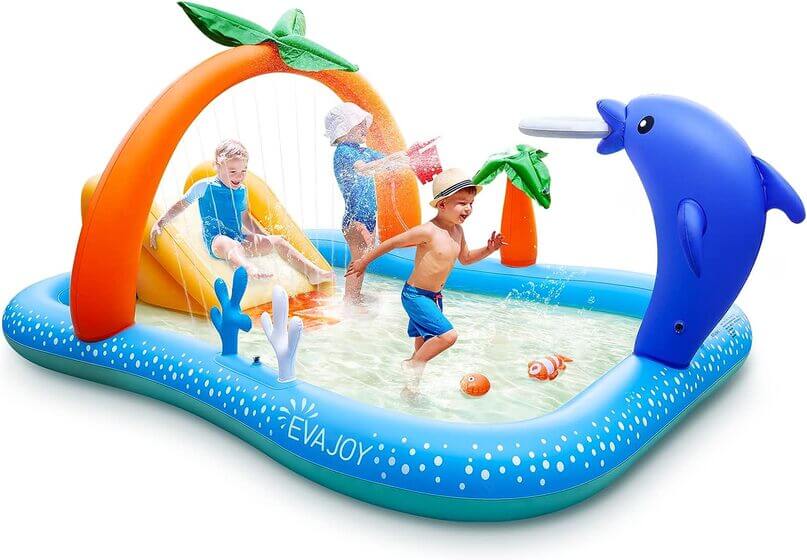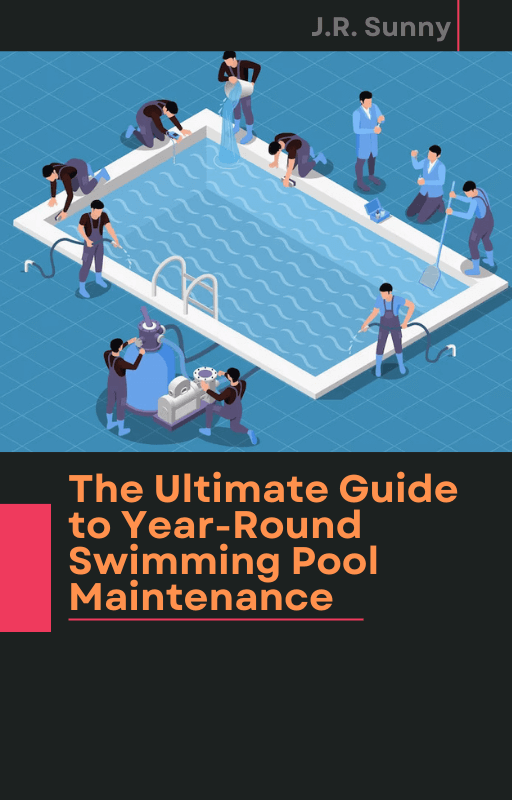As the warm days of summer approach, many families turn to their trusty kiddie pools for a splash of outdoor fun and relief from the heat. While these miniature aquatic havens offer hours of enjoyment for youngsters, they also demand proper care and maintenance to ensure a safe and hygienic swimming environment. One common question that often arises is whether it’s acceptable to use chlorine tablets in a kiddie pool.
What do you think? Can you use chlorine tablets in your kiddie pool? In this article, we’ll explore this topic in detail, providing you with the essential information and guidelines to make informed decisions about maintaining your kiddie pool.
Whether you’re a seasoned pool owner or a first-time parent setting up a pool for your little ones, read on to discover the ins and outs of using chlorine tablets in a kiddie pool.
Can You Put Chlorine Tablets in a Kiddie Pool?
Yes, you can use chlorine tablets in a kiddie pool to help maintain the water’s cleanliness and prevent the growth of algae and harmful bacteria. Chlorine tablets are a common method for disinfecting and sanitizing swimming pools, including small kiddie pools.
Here are some steps to safely use chlorine tablets in a kiddie pool:
- Choose the right chlorine tablets: Purchase chlorine tablets specifically designed for swimming pools. You can find these tablets at most pool supply stores or online. You should make sure they are appropriate for the size of your kiddie pool.
- Use a chlorine floater or dispenser: Don’t simply toss the tablets into the pool, as they can bleach or damage the pool liner. Instead, place them in a chlorine floater or a specialized dispenser designed for small pools. Adjust the floater’s settings to control the release of chlorine into the water.
- Follow the manufacturer’s instructions: Read and follow the instructions provided by the manufacturer on the chlorine tablet packaging. This includes guidance on the number of tablets to use based on your pool’s size and the recommended water treatment schedule.
- Monitor chlorine levels: Regularly check the chlorine levels in the kiddie pool using a pool water testing kit. The ideal chlorine level for a swimming pool typically falls within a range of 1-3 parts per million (ppm). Adjust the number of tablets or the floater settings as needed to maintain the correct chlorine concentration.
- Be cautious with children: While chlorine tablets are safe when used properly, always keep them out of the reach of children. Make sure children don’t touch, handle, or swallow the tablets, and store them in a secure location when not in use.
- Practice pool safety: In addition to maintaining proper chlorine levels, remember to follow other safety precautions when using a kiddie pool, such as supervising children at all times, ensuring the pool is securely set up, and emptying and storing the pool when it’s not in use to prevent accidents.
By following these steps, you can help ensure that the water in your kiddie pool remains clean and safe for use.
Necessary Safety Measures to Use Chlorine Tablets in Kiddie Pool
Using chlorine in a swimming pool for kids requires careful attention to safety to ensure a clean and safe swimming environment.
Here are some necessary safety measures to take when using chlorine in a swimming pool for children:
Proper Chlorine Storage
- Store chlorine and other pool chemicals in a cool, dry, and well-ventilated area away from direct sunlight, heat, and moisture.
- Keep these chemicals out of reach of children and pets. Use a secure, locked storage container if necessary.
Labeling and Handling
- Always follow the manufacturer’s instructions for handling and using chlorine and pool chemicals.
- Clearly label containers and equipment used for pool chemicals.
Personal Protective Equipment (PPE)
- When handling pool chemicals, wear appropriate PPE, such as gloves and safety goggles, to protect your skin and eyes.
Proper Mixing
- Never mix different types of pool chemicals unless the manufacturer’s instructions explicitly allow it.
- Add chemicals to the pool water individually, following recommended dosages.
Dispersal Method
- Use a proper pool chemical dispenser or floater for adding chlorine tablets to the pool, as mentioned in the previous response.
Testing and Monitoring
- Regularly test the pool water’s chemical levels, including chlorine, pH, and alkalinity, using a pool water testing kit.
- Adjust chemical levels as needed to maintain a safe and comfortable swimming environment.
Safety Barrier
- Install a childproof safety barrier or fence around the pool area to prevent unsupervised access to the pool. Ensure the gate has a self-latching mechanism.
Supervision
- Always supervise children when they are in or around the pool, regardless of their swimming abilities.
- Designate a responsible adult to watch the children at all times, even if lifeguards are present.
Water Safety Education
- Teach children about pool safety, including the importance of not ingesting pool water, not running around the pool, and not diving in shallow water.
First Aid Kit
- Keep a well-stocked first aid kit near the pool area to address minor injuries promptly.
Emergency Preparedness
- Learn CPR and ensure that someone at the pool knows how to perform it.
- Have safety equipment like life rings, reaching poles, and a phone with emergency numbers nearby.
Proper Pool Maintenance
- Regularly clean and maintain the pool to prevent the growth of algae and bacteria.
- Keep the pool water clear and free of debris.
Chemical Storage Away from the Pool
- Do not store pool chemicals near the pool area to prevent accidental spills.
After following these safety measures, you can create a safe and enjoyable swimming environment for kids in a chlorinated pool. Remember that diligent supervision and education about pool safety are key components of keeping children safe around swimming pools.
Summary
So, there you have it! using chlorine tablets in a kiddie pool is not only possible but also a smart way to keep the water clean and safe for your little ones to enjoy. Just remember to follow the safety guidelines, monitor chlorine levels, and keep a close eye on the kids as they splash around.
With the right precautions, you can create a refreshing and worry-free swimming experience for your children in your very own backyard oasis. Can you put chlorine tablets in a kiddie pool? What do you think? We hope you got the overall idea.

